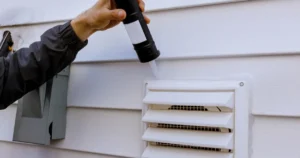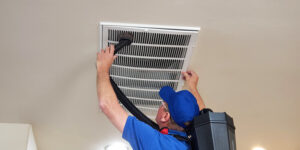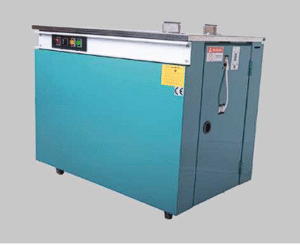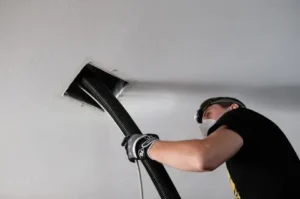
In today’s world, securing your property is no longer optional—it’s essential. Whether you’re a homeowner in the suburbs or a business owner in central Melbourne, the smart use of CCTV cameras can make a world of difference. But it’s not just about owning a surveillance system—it’s about where and how you install it.
In this comprehensive guide, we explore the most effective locations to place your CCTV cameras installation your Melbourne property. With safety, privacy, and clarity in mind, we’ll help you achieve full coverage and peace of mind.
Why Proper CCTV Camera Placement Is Crucial
Before diving into specific locations, it’s important to understand why correct placement matters. A poorly positioned camera is like a guard asleep at their post—it looks impressive but provides no real security.
Here’s what proper placement achieves:
-
Maximizes field of view
-
Eliminates blind spots
-
Deters intruders
-
Captures clear footage for evidence
-
Supports insurance claims or legal disputes
In Melbourne, with its mix of urban activity and quiet residential zones, the balance between visibility and discretion is key.
Understanding Legal Guidelines in Melbourne
Before mounting any camera, consider Victoria’s privacy and surveillance laws. These regulations ensure you protect your property without infringing on others’ rights.
Legal Do’s:
-
Install cameras on your own property or with the owner’s consent.
-
Ensure your footage does not capture inside neighboring homes.
-
Use footage only for security and lawful purposes.
Legal Don’ts:
-
Do not record audio without permission.
-
Avoid filming public footpaths, roads, or shared spaces (e.g., apartment corridors) without appropriate signage or approval.
For business premises, comply with Occupational Health and Safety (OHS) and workplace privacy standards.
Best Outdoor Locations to Install CCTV Cameras
Outdoor cameras act as your first line of defense. Here are the prime spots that deserve attention:
1. Front Door: First and Foremost
Statistics show that 34% of burglars enter through the front door. This area must be monitored.
Placement Tips:
-
Position camera above the doorframe at a downward angle.
-
Use a doorbell camera for facial recognition at eye level.
-
Include infrared or night vision for 24/7 monitoring.
2. Driveway and Garage Area
Garages store more than cars—they hold tools, bikes, and valuables. Driveways are access points for break-ins or package theft.
Placement Tips:
-
Mount the camera to face the driveway entrance and garage door.
-
Ensure your lens can capture license plates.
-
Install motion-detection lights to boost nighttime clarity.
3. Backyard and Rear Entrances
Backyards are often less visible to neighbors or the street—making them a target.
Placement Tips:
-
Install high on the back wall of the house, facing gates or fences.
-
Cover hidden corners and sliding doors.
-
Use weather-resistant cameras with a wide field of view.
4. Side Gates and Alleyways
These entry points are easy for intruders to use, especially at night.
Placement Tips:
-
Place cameras slightly above the gate level.
-
Make sure they cover full passageways and connect to motion alerts.
-
Use tamper-resistant casings to avoid vandalism.
5. Property Perimeter or Fence Line
While not always necessary, monitoring your property’s boundary can help detect trespassers before they reach your home.
Placement Tips:
-
Use long-range bullet cameras.
-
Mount cameras on poles or tall fences.
-
Focus on main access points, like open fields or bushy areas behind the home.
Best Indoor Locations to Install CCTV Cameras
CCTV systems aren’t just for outdoors. Indoor cameras help protect your valuables and monitor activity inside.
1. Main Entryways and Hallways
Every intruder must pass through at least one hallway or entrance.
Placement Tips:
-
Install at the end of hallways, capturing people entering from multiple rooms.
-
Consider wide-angle lenses for full coverage.
-
Aim slightly downward for facial visibility.
2. Living Room, Kitchen, and Common Spaces
These areas often contain expensive electronics or family heirlooms.
Placement Tips:
-
Mount cameras on corners of ceilings to capture the entire room.
-
Avoid direct sunlight to reduce glare.
-
Choose discreet models to blend with decor.
3. Staircases and Upper-Level Landings
Two-storey homes benefit from monitoring stairs, as intruders may head upstairs for bedrooms.
Placement Tips:
-
Use dome cameras for a wider perspective.
-
Avoid installing too high, or faces may not be visible.
Advanced Locations for Melbourne Businesses and Commercial Properties
If you run a retail store, office, or warehouse in Melbourne, the security stakes are even higher.
1. Reception and Entry Lobbies
Capture every customer, visitor, or vendor who enters.
Placement Tips:
-
Place cameras above or behind reception desks.
-
Ensure clear angles to identify individuals and record time stamps.
2. Stockrooms and Storage Areas
These areas often house inventory, equipment, or sensitive documents.
Placement Tips:
-
Cameras should cover shelves, safes, or high-risk zones.
-
Avoid blind spots by overlapping camera views.
3. Parking Lots and Loading Bays
These areas are often overlooked—but are high-risk for theft or vandalism.
Placement Tips:
-
Install high-mounted cameras on walls or poles.
-
Use floodlights to enhance visibility at night.
-
Ensure all exit/entry paths are covered.
Expert Installation Tips for Maximum Coverage
Getting the location right is only half the job—installing your cameras the right way makes all the difference.
Best Camera Heights:
-
Residential: 2.5 to 3 meters high.
-
Commercial: 3 to 5 meters depending on building size.
Avoiding Glare & Blind Spots:
-
Don’t place cameras facing direct sunlight or reflective surfaces.
-
Regularly clean camera lenses.
-
Trim nearby trees or plants that obstruct views.
Wired vs Wireless:
-
Wired systems are more reliable but need professional setup.
-
Wireless systems offer flexibility and easier DIY installation.
Integrating with Smart Home Devices:
-
Link cameras with motion sensors, alarms, or smart locks.
-
Use mobile apps to get real-time alerts and footage access.
-
Store footage in the cloud for better security and backup.
Conclusion: Smart Surveillance Starts with Smart Placement
Whether you’re protecting a home in Carlton or a café in St Kilda, knowing where to install CCTV cameras can dramatically improve your property’s safety. Every corner, entry point, and blind spot matters. From the front door to the garage, from reception to stockroom—each camera plays a key role in your defense strategy.
Don’t let poor placement undermine your investment. Plan strategically, follow legal guidelines, and consult experts when needed. Because when it comes to security, it’s better to be proactive than reactive.
Frequently Asked Questions (FAQs)
Q1. Can I install CCTV cameras facing a public footpath or street in Melbourne?
Generally, no. Victorian privacy laws restrict filming beyond your property line. If unavoidable, make sure to angle the camera to focus primarily on your property and not the street.
Q2. Do I need council approval to install CCTV at my Melbourne business?
Not usually, unless your installation impacts heritage-listed buildings, alters the building’s structure, or affects public walkways. However, you must display signage informing visitors they are being recorded.
Q3. How many CCTV cameras should I install in a typical Melbourne home?
For a standard suburban home, 4 to 6 cameras are recommended:
-
1 at the front door
-
1 at the back door or yard
-
1 facing the driveway
-
1–2 indoors (e.g., hallway and living room)
Q4. What’s the best time to install CCTV—during a renovation or after moving in?
During renovations or construction is ideal. This allows for neat wiring and concealed installation, saving time and cost later.
Q5. How long should my CCTV footage be stored?
Typically, businesses store footage for 14 to 30 days, while homeowners may store 7 to 14 days. With cloud options, you can extend this easily based on subscription plans.





